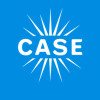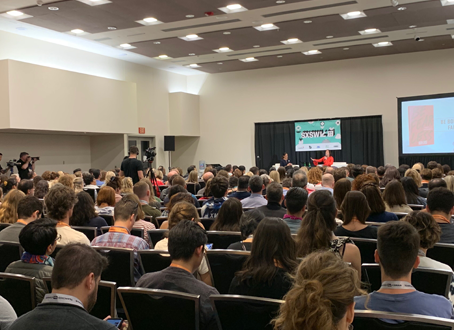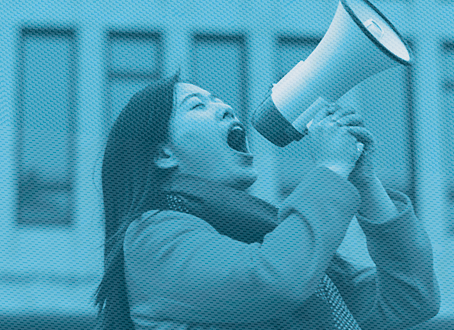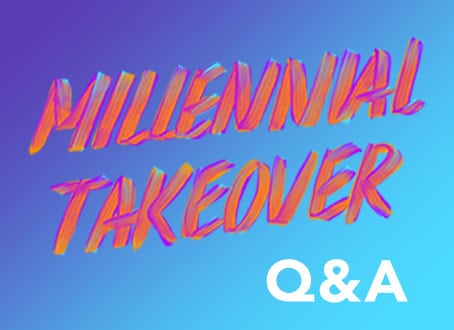For many organizations, year-end is a time to reflect on accomplishments and lessons learned throughout the year. I think it’s fair to say that for all of us, both professionally and personally, 2009 can be described as a year of change, challenges and uncertainty. But we also recognize that even in the hard years blessings abound and we find some successes and terrific new opportunities often emerge – sometimes out of necessity.
As I’ve discussed in a previous post, the economic shifts that have taken place in the last few years have caused us to be even more vigilant about ensuring that we deploy our resources effectively and develop smart programs that yield meaningful outcomes. Recently, I sat down with the team to reflect on our 2009 programs and initiatives. I was truly struck by the breadth and depth of what the team, along with our invaluable partners, was able to accomplish. And of course, we learned many lessons along the way. I wanted to take a moment to share some additional thoughts on how the year shaped up at the Case Foundation.
A key priority for us this year was in the area of deepening civic participation – we kicked off the year with the “Change Begins with Me” campaign – asking people to make personal commitments to “be the change” in keeping with the inauguration of a new President. Recognizing that an effective government relies on a healthy, active citizenry, we were incredibly pleased to see in our follow up research that a significant percentage of participants had fulfilled those commitments. In addition, we’ve worked with President Obama’s administration to support their civic participation efforts including Summer of Service, United We Serve, and we continued to partner with organizations like the National Conference on Citizenship to help the nonprofit sector develop strategies to leverage technology to ignite civic participation.
In addition, across the philanthropic sector we saw explosive growth in the use of online communications – and particularly social networking technology – changing the way organizations think about communicating with stakeholders and increasing awareness. With the intersection of technology and philanthropy always at the core of what we do, we saw an opportunity to encourage nonprofits to make a shift from experimenting with social media to thinking about how they might leverage in a more strategic way to drive action. Through our “Gear Up for Giving” program, we helped to train thousands of individuals and nonprofits with the help of social media experts. We saw these organizations put those lessons to work immediately through the 2009 America’s Giving Challenge, which encouraged nonprofits to capitalize on both their online and offline social networks to raise donations and garner support for their cause. Beyond our own programs, the multitude of online giving initiatives such as the Chase Community Giving initiative and the incredibly successful GiveMN campaign, we have seen that there is a real appetite for continuing to understand the central role technology and social media can play in nonprofit fundraising and democratizing philanthropy. Could all of these programs be improved over time? Absolutely. But our hats are off to all of those companies and philanthropic organizations who are experimenting and breaking new ground to find a way to leverage “everyday philanthropy” and “technology for good.”
I also want to celebrate the successes and reflect on lessons learned by our key partners. Accelerate Brain Cancer Cure has had an incredibly encouraging year, starting with the FDA approval of a new drug, Avastin, for brain tumor patients (the first such approval in a decade), which was the result of funding from ABC2 in partnership with Genentech and Duke University, to $2.5 million raised through the Race for Hope in DC and several promising investments going into 2010. At PlayPumps, we’ve acknowledged challenges on the ground, but we’re thrilled about the new relationship with Water For People to leverage the PlayPump and many other innovative safe water interventions to ensure all people have access to clean drinking water.
This past year has yielded a great many lessons that will guide our work going forward:
- Technology is king. The potential impact of technology continues to dominate the conversation in the nonprofit sector. As Steve has often said about the creation of AOL, the early days of the Internet were about building community and fostering discussion on a wide range of topics and affinities. Then, for a time, we saw a shift to a one-way conversation online, due to advertising and a focus on pushing information out, without a mechanism for taking new information in. Thanks to social media, we have returned to an online environment that is all about wide-ranging and diverse conversations that foster collaboration, bring new voices to the table and deepen relationships. More and more nonprofits are learning that social media must be core to their efforts; not an aside for the tech-savvy “youngsters.” However, as we saw from the response to our Gear Up for Giving tutorials and from ongoing debate in the nonprofit world, many are still only at the beginning stages of figuring out what works, and what doesn’t, setting the stage for big opportunities.
- But don’t forget the significance of offline. The research conducted from our first America’s Giving Challenge, and initial reflections of this year’s campaign showed that successful efforts employed a combination of online and offline tactics. While technology is changing the way we communicate with each other, there is no replacement for that personal touch, and always remembering to reach your audience where they are.
- We’re better together. Problem solving is no longer the sole responsibility of the public and nonprofit sector. Whether it is Google helping us provide technology training to hundreds of developers and social entrepreneurs in the Palestinian West Bank or the Aspen Institute and W.K. Kellogg Foundations raising the stakes in the Giving Challenge, we have seen firsthand that we are definitely better – and produce better results – when we work together.
- The power of the individual. In the annual New York Times Giving section, Stephanie Strom commented on the “new fame for the everyday donor,” noting the increased significance of individual giving during these economic hard times. While many look towards foundations, corporations and the government for resources, they often forget that more than 80% of giving in this country comes from individuals. Technology is giving us a historic opportunity to reach, organize, educate and mobilize masses to support complex social challenges – big and small. Thinking about how to leverage individual giving will forever be at the top of our mind whenever we decide to allocate any resources.
- Re-thinking Scale. For many years we have been, and continue to be, champions of venture philanthropy-which seeks the most innovative models and infuses significant financial and intellectual resources in an effort to shore up the model and seed broad replication. While this continues to be an approach that works in many situations, we have also learned that sometimes we should think about scale in terms of making a local entity the best in can be in its neighborhood and exporting those lessons so that similar, yet locally-derived, efforts can benefit from what has been learned.
In the “old school” days when I was sitting at a corporate desk, I would have thought my current job would be simple – make grants and watch the good happen. However, in the past 12 years I have learned there is nothing further from the truth, and my team and I have a barrel of lessons (and admittedly a few bruises) to prove it. Yet, in the middle of stressful days I often pause and reflect on how thankful I am that I get to work with the best and brightest committed people across the sector to dream up solutions, partnerships and innovations to tackle common and long-standing challenges. We are so grateful to have the unwavering support of so many friends of the Case Foundation. I look forward to 2010 and pray it will be the best year yet.





